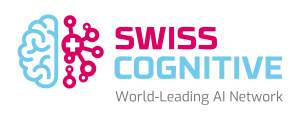Assessing generative AI risks may seem like catching a moving train from behind. New thinking about generative AI ethics can help to reduce the risks, not the least of which is handling data correctly.
Copyright: diginomica.com – “Generative AI In the Enterprise – Re-Assessing the Risk Factors”

AI has been introduced in every business. Companies are exposed to new risks, such as bias in the AI application, fear of job loss due to automation, privacy violations, and discrimination. Many opinions about these risks centered on ethical issues, but there are many causes of problems with AI development that aren’t ethical issues but can cause them:
- Data: Machine Learning (ML) isn’t developed in Excel. The volume of data needed for an ML model is vastly more than a human can examine for errors or faults. Data quality tools are helpful to a point but only for one data source at a time. Merging tables creates hidden problems that even current data management tools sometimes need to spot.
- ML and even deep learning can cause unpredictable errors when facing situations that differ from the training data. This is because such systems are susceptible to “shortcutlLearning,” statistical associations in the training data allow the model to produce correct answers for the wrong reasons. Machine Learning, neural nets and deep learning do not learn the concepts; instead, they learn shortcuts to connect answers to the training set.
- Adversarial perturbations: Adversarial attacks involve generating slightly perturbed versions of the input data that fool the classifier (i.e., change its output) but stay almost imperceptible to the human eye.
- Immutability: Great care must be taken to ensure the model cannot be tampered with.
Other elements can override the ethical process, such as senior management and the work environment, e.g., some pressures come into play:
- When an organization pressures development that may not seem ethical
- You adopt an “it’s only the math” excuse or “that’s how we do it.
- You engage in fairwashing: concocting misleading excuses for the results
- You don’t know that you’re doing these things[…]
Der Beitrag Generative AI In the Enterprise – Re-Assessing the Risk Factors erschien zuerst auf SwissCognitive, World-Leading AI Network.



